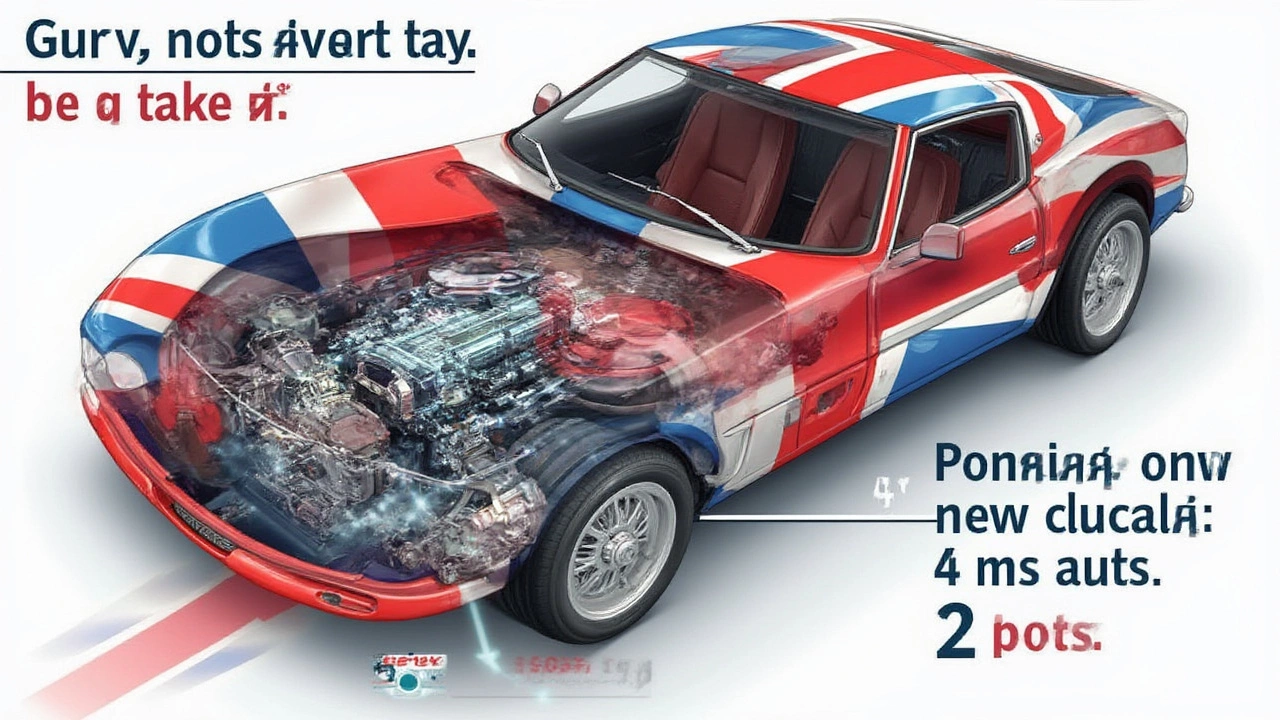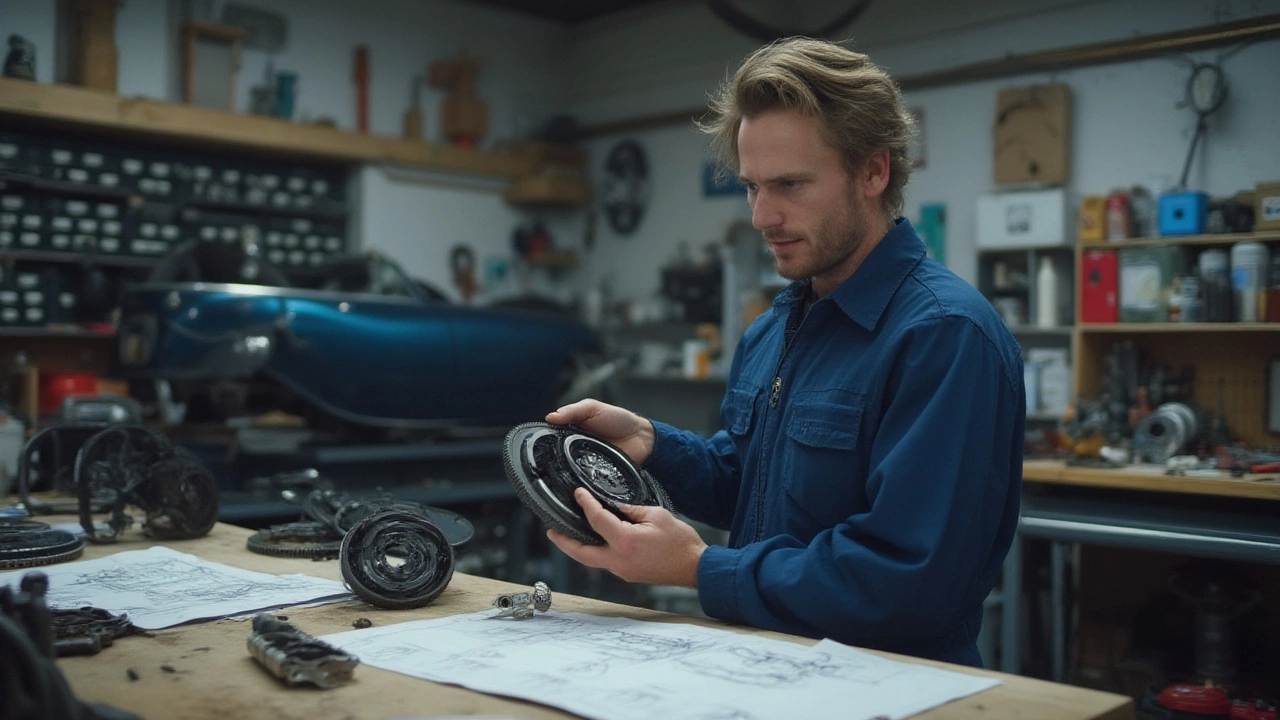Slam the gas. Dump the clutch. Tires chirp, heart races, but suddenly the car feels sluggish—or the smell of burning friction stings your nose. You know something’s up. It’s a classic scenario: you blame the clutch. Then someone at the shop claims, “A new clutch will give you more horsepower.” But is that actually true? Let’s pull back the hood and see what a new clutch is really doing for your HP numbers, your driving experience, and your future upgrades.
Breaking Down What Your Clutch Really Does
When you hear people talk about upgrading the clutch, the first thing to realize is that a clutch is like a messenger, not a creator. Its job is to deliver, not to invent. The clutch sits between your engine (which makes power) and your wheels (which use it). When you press the pedal, you disconnect the engine from the transmission. Release the pedal, and that spinning force goes out to the drivetrain. Pretty simple—except when the clutch wears out, starts slipping, or can't handle your engine’s torque.
Now, horsepowers are born inside the engine, nowhere else. The clutch isn’t a magic power booster. Instead, if it’s slipping—which means it can’t fully hold on—some of that power just gets wasted as heat and burnt material. So, a worn clutch doesn’t make less horsepower; it just fails to deliver all the horsepower your engine already makes. Think of it like a water hose with leaks: the water didn’t vanish, it’s just not reaching where you want it. Install a new clutch, and suddenly, all the engine power gets to the road. It’ll feel faster—not because you ‘gained’ horsepower, but because you stopped losing it. You might read tales of dyno runs showing gains after a new clutch, but that’s just restoring original output, not adding extra. New clutch = restored, not increased, HP.
Ever look at a drag racing forum? You’ll hear folks rave about instantly cutting half a second off their quarter-mile times just by swapping the clutch. What’s really happening? That new clutch is finally gripping as hard as the engine demands, launching the car with everything it’s got. So, technically, your 0-60 feels snappier—but your engine’s horses haven’t bred any new stallions.
When Can a New Clutch Change Power Delivery?
Okay, so the stock clutch just passes along what the engine has. What about aftermarket setups? Here’s the twist: performance clutches are built to handle higher torque, resist heat, and grip like a wrestling champ. If your engine is stock, installing a fancy race clutch won’t magically give you extra HP. But—big but—if you’ve already bolted on turbo kits, tossed in nitrous, or tuned the engine past factory power, now you’re talking. A heavy-duty clutch won’t strangle that extra power. Instead, it lets your beefed-up engine actually get those horses to the tires, every time. In this way, the clutch isn’t adding to the stable; it’s unlocking the barn door so all the animals run free.
Let’s say, for example, you squeeze 50 extra hp out of your Civic via forced induction. The tired old factory clutch starts slipping at high RPMs. That means every time you push it, power bleeds away in heat and smoke. You fit a stronger clutch, and drag strip times suddenly match your dyno numbers. Still, no new HP under the hood; it’s just not being wasted anymore. For anyone running performance upgrades, a clutch swap is less about chasing numbers and more about making your build reliable and effective.
And yes, there’s psychological power. A new clutch that bites hard and grabs smooth adds confidence every time you launch. You feel everything the engine can do, every surge, every jolt. But let’s not confuse that with literal, measured horsepower gains. The sensation of speed is real, but it’s about mechanical honesty, not actual mechanical growth.

Clutch Types: What’s Out There and What Changes?
This is where things get wild in the parts catalog. You’ve got organic clutches, puck-type, twin-disc, ceramic—each with their own quirks. Factory clutches are designed for quietness and comfort, soft engagement, and daily driving. That’s perfect until you bolt on a turbo or start tracking your weekend car. Then it just can’t hang. Let’s break down what happens with each upgrade:
- Organic clutches: Good for stock or near-stock cars. Smooth, gentle on components, but not built for huge torque.
- Puck/paddle clutches: Designed for harsh grip and quick heat dissipation. They chatter at low speeds but never fade on the track. Best for heavily modded engines.
- Ceramic or Kevlar clutches: These survive crazy power and hot launches, but they’re pricey and can be less forgiving in city driving.
- Twin-disc clutches: Double the friction surface, double the holding power, meant for wild builds only.
Does choosing a premium race clutch add horsepower? Nope, not directly. But if your engine is making more power than stock, these clutches let that power reach the ground without sliding or burning up. If you’re running the 660-ft at your local strip, a high-performance clutch can mean the difference between spinning your wheels in frustration or finally putting all your upgrades to work.
People say, “But the new clutch feels so much quicker!” and that’s true for the reasons above. It’s giving you a full, lost-free connection, not bumping up your dyno chart. Watch out, though: stiffer clutches can be a pain in stop-and-go traffic and make your left leg feel like it spent a week at CrossFit. Choose the type that matches how you really drive, not just what the fastest YouTuber says.
What Dyno Charts and Real-World Results Show
Time to look at real numbers. When shops swap in a new clutch, sometimes dyno results show a small bump in measured HP at the wheels. It’s tempting to think this comes from the clutch itself. Here’s what’s really happening: if the old clutch was slipping, some of the power was lost between the engine and the dyno rollers. The engine didn’t make less, it just didn’t get delivered. After a clutch swap, everything the engine makes shows up on the wheels—so the dyno papers finally match the textbook specs.
Don’t take my word for it. Look at this example table comparing power before and after a clutch swap, with zero other changes:
| Clutch Condition | Engine HP | Wheel HP (Pre-Swap) | Wheel HP (Post-Swap) |
|---|---|---|---|
| Worn/Slipping | 300 | 245 | — |
| Fresh/New | 300 | — | 295 |
That extra 50 HP at the wheels didn’t appear from nowhere; it was getting wasted before. The car always had 300 at the crank, but now the driveline delivers it all. If your clutch wasn’t slipping to begin with, you’d see no change—just a fresh pedal feel. The main thing is, a new clutch is like cleaning up communication between engine and wheels, not sending new muscle down the wire.
Pro tip: if you’re measuring results, always test before and after on the same dyno, same fuel, and same weather conditions. Temperature, air density, and tire pressure all affect wheel horsepower. If you want dramatic gains from just a clutch swap, you’re only going to see it if the old clutch was already failing badly. For fresh cars, it’s just peace of mind.

Smart Tips for Clutch Upgrades and Maintenance
Let’s talk about the smartest way to approach your next clutch job. Want reliability and full use of those hard-earned horses? Pick a clutch rated for at least 20% above your engine’s current torque. Don’t just shop by horsepower—torque breaks clutches, not HP numbers. Double check the flywheel; a smooth, crack-free surface is key. Run a lightweight flywheel? You’ll rev quicker but might lose drivability in daily traffic.
If you daily your car, avoid race-only clutches unless you really love a heavy pedal and noisy starts. For weekend warriors, go tougher. Replace the pilot bearing and throwout bearing with every clutch job; skipping these can undo all your hard work when they fail. Use high-temp grease on splines, and always follow the clutch manufacturer’s break-in period (often 400-500 miles of gentle use).
- Check your hydraulic system: Old, gummed-up fluid or soft hoses mess with clutch feel and effectiveness.
- Stay clean during install: One greasy fingerprint ruins friction material. Wipe everything thoroughly.
- Torque to spec: Don’t just eyeball bolts, especially on flywheel and pressure plate. Vibrations kill clutches fast.
- Plan for matching power: If you’re still running stock power, an OEM replacement is fine. Big turbo? Get stage 2 or higher.
- Budget for extras: Clutch jobs sometimes reveal leaky main seals or cracked fork arms. Factor that into your time and wallet.
Clutch swaps aren’t just about fixing slippage—they’re your ticket to making sure every last bit of power you paid (and worked) for actually gets to the street or strip. But don’t expect a magic hp bump for free.

